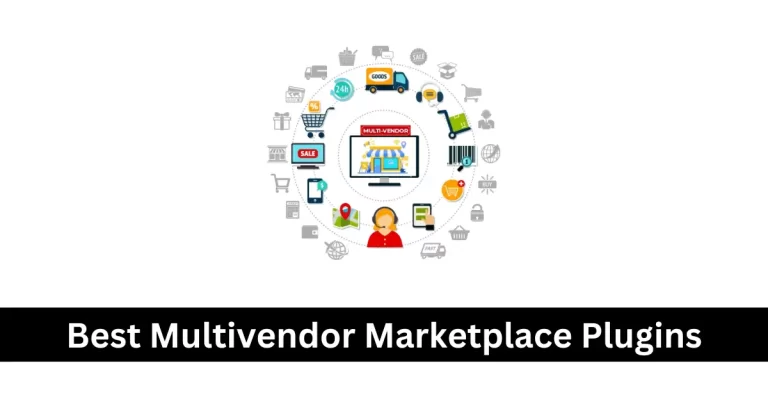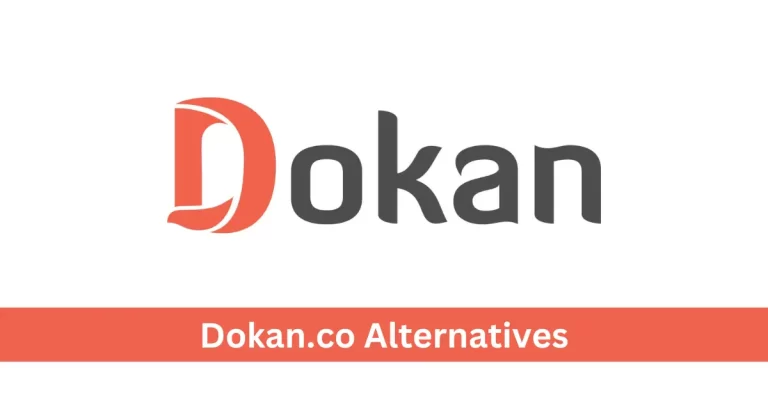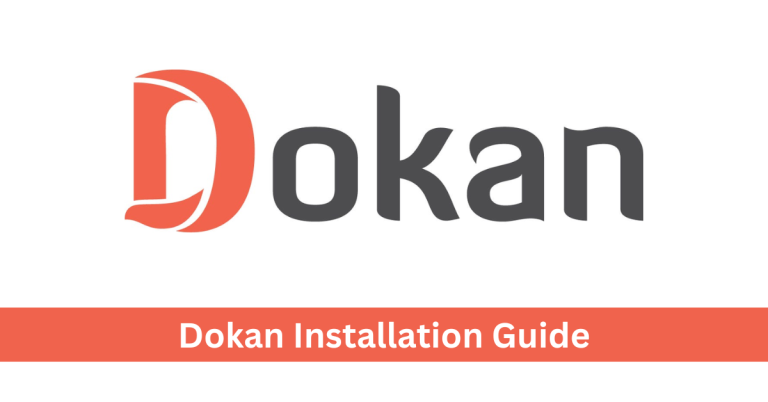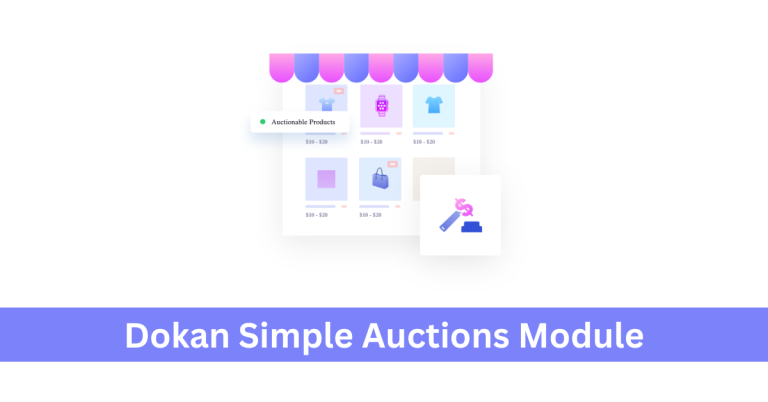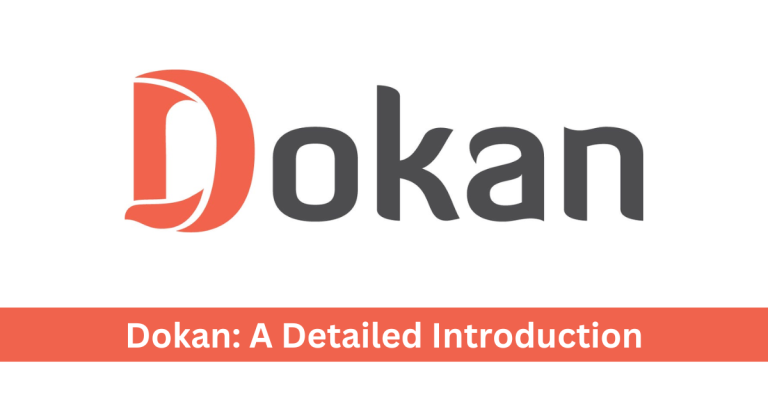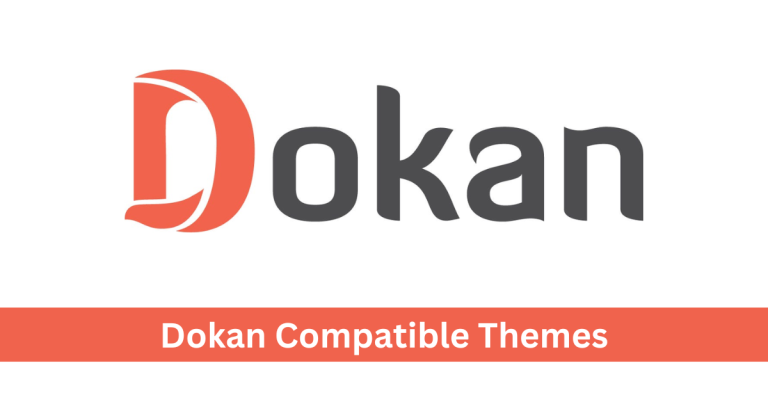Dokan vs MultivendorX 2024: Which Platform is Better?
When you are looking for a multivendor plugin to base your marketplace on you shouldn’t hesitate to spend as much time as needed on the research process. After all, migrating an entire fully functional marketplace won’t be an easy task. Dokan and MultuvendorX have become the go-to options for anyone setting up a multivendor marketplace in 2024. But once you narrow down your search to these two plugins it can be difficult to pick a single tool.
The only way to decide which option makes more sense between the two plugins is to try them out and pick a winner. But the thing is that both the MultivendorX and Dokan plugins only offer limited free versions and the premium features are only available with paid plans. In order to save you the trouble of testing both the alternatives and then picking a multivendor plugin that fits your needs our team has tested both of these plugins in depth.
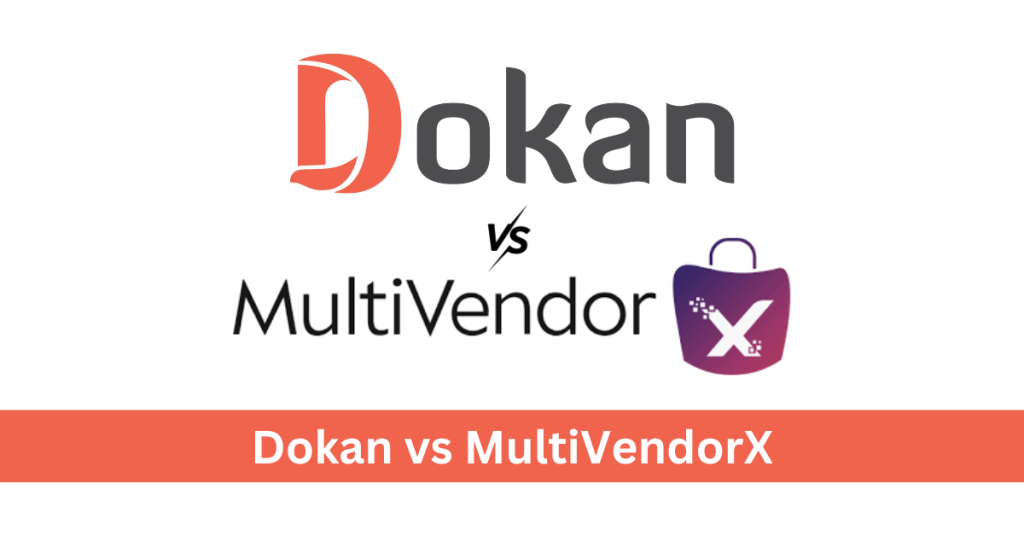
We are going to evaluate Dokan and Multivendor X based on the available features, price, ideal usage scenarios, and other criteria. This comparison is created with the purpose of helping entrepreneurs in choosing the right option to kickstart their multivendor marketplace. Keep reading to know how Dokan and MultivendorX compare in 2024.
Dokan vs MultivendorX: Overview
Dokan and MultivendorX have garnered significant userbase and they have both been around for almost the same duration of time. So it is safe to say that both of these plugins have had an equal amount of time to develop and innovate into the current versions. With that said here are the overviews of Dokan and MultivendorX plugins in a nutshell:
Dokan
Dokan multivendor plugin was launched back in 2015 and it has since gained a userbase consisting of 60,000 multivendor platforms. With Dokan you can build a multivendor marketplace that serves the purpose of selling both physical and digital products depending upon how you configure it.
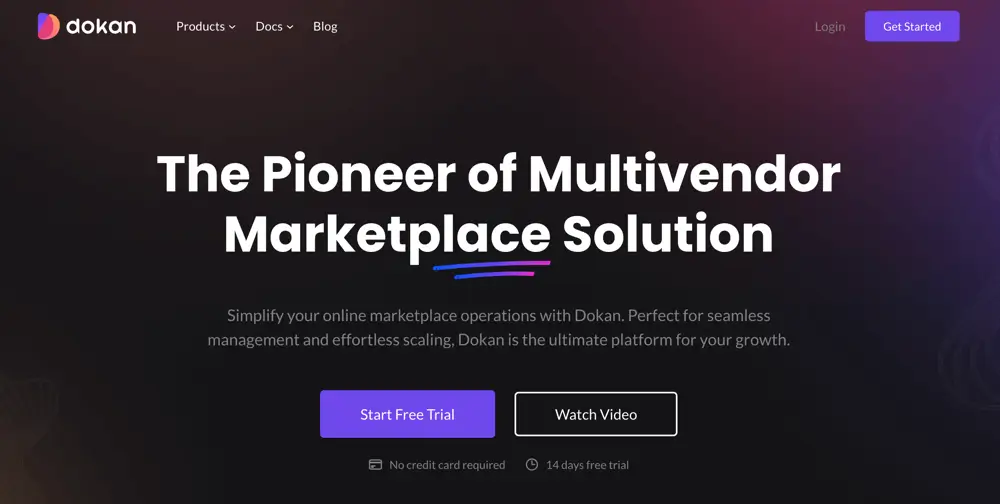
In many cases, Dokan plugin’s internal features and functionalities are enough to maintain and run a multivendor marketplace. However, you can also install modules and get third party integrations for Dokan to further enhance the useability of the Dokan plugin.
MultivendorX
MultivendorX plugin was launched in 2016 just one year after Dokan and it has a user base of more than 7000 users. This plugin was previously called WC Marketplace and was later rebranded to MultivendroX.

With this plugin users get robust features for both vendors and admins along with convenience for customers. Similar to Dokan this plugin also takes advantage of WooCommerce functionalities and turns a WooCommerce site into a multivendor marketplace.
Dokan vs MultivendorX: Features Comparision
A plugin’s usefulness is measured by the features it offers and after all you can only use a plugin if all its features are accessible and users can benefit from them. Since both of these tools work on similar principals and solve similar problems it is no surprise that they share features as well. However, the capabilities and the way they add value for a multivendor marketplace vary. Here is a comparison of the features of both of these plugins:
User Interface
Both Dokan and MultivendorX have frontend dashboards that let both admins and vendors manage various aspects of their stores. Both Dokan and MultivendorX have elaborate dashboards for both parties so admins and vendors don’t have to rely on complex backend managment to take care of administrative and store management tasks.
With that said Dokan’s admin dashboard comes with the added benefit of giving users a complete overview of the marketplace right from the dashboard. On the other hand in MultivendorX the marketplace overview is not available directly on the admin dashboard page.
Customization Options
Turning a multivendor marketplace into a truly custom and brand focused platform requires customization. Both Dokan and MultivendorX support all major WooCommerce themes and therefore you won’t find any issue customizing your marketplace with either of these plugins.
However, Dokan has its own default theme options that you can use and customize from within the Dokan ecosystem in case you don’t want to download WooCommerce themes. At the same time, MultivendorX allows you to use themes from third party theme stores. So as far as customization options are concerned both Dokan and MultivendorX offer similar levels of customization options.
Add Ons
While add ons are not a feature they are directly responsible for enhancing a marketplace’s functionality. By using add ons for your marketplace you can also make it easier for both yourself as an admin and vendors to manage various aspects of the marketplace.
When it comes to the sheer number of add ons MultivendorX definitely has the edge in this department since they offer 24 free and over 35 paid add ons. On the other hand, Dokan offers more than 40 add ons however their add ons are well designed and offer comprehensive functions for marketplace users and vendors.
Payment Options
While you may be able to work with 1 or 2 payment options for your marketplace at the start as your marketplace grows and gains a global customer base you will realize the importance of multiple payment options.
Dokan has a built-in support for all WooCommerce payment options since it is entirely based on the WooCommerce plugin. In addition, you also get integration with PayPal, Stripe, Wirecard, Stripe Express, Razorpay, and Mangopay with Dokan.
MultiendorX also has support for all WooCommerce payment options and on top of that this plugin also supports PayPal, Bank transfers, MassPay, Stripe, Mangopay, and Razorpay. So no matter which option you choose you can rest assured that you will get ample payment options to choose from.
Marketplace Security
Keeping your multivendor marketplace safe and secure for your vendors and customers is extremely important. So naturally you would have to look at the available security features of a marketplace plugin before buying it.
Dokan ensures that access to the backend is only restricted to admins and they also employ features such as Regular security updates for the plugin, Code reviews to find vulnerabilities, Security audits, and Secure coding practices to keep the plugin and the marketplaces based on it as safe as possible.
MultivendorX also used practices such as encryption protocols, secure authentication methods, and regular security audits to keep the marketplaces secure. They also regularly back up marketplace data to ensure that users never have to worry about data loss.
Shipping And Delivery
Managing shipping and delivery is one of the most common aspects of store management for vendors. So naturally you would want to pick a plugin that offers plenty of shipping and delivery focused features to ensure timely delivery of orders.
Dokan supports regular WooCommerce shipping features such as setting shipping rates for each store, Flat rate shipping, Free shipping, and Local pickup. In addition, Dokan also offers Zone Wise Shipping, Product Wise Shipping, and Distance-rate shipping to give vendors more control over the shipping process.
In contrast, MultivendorX has fewer builtin shipping and delivery features but has support for all WooCommerce default shipping options.
Dokan vs MultivendorX: Price Comparison
With Dokan and MultivendorX both competing directly against one another it is no surprise that some of their plans have similar pricing. However, the number of pricing plans offered by both of these plugins varies because Dokan offers four premium plans while MultivendorX only offers three.
When it comes to payment plans both plugins offer yearly payment options and you get access to different features and resources with each plan in case of both plugins. Here are all the available pricing plans for both of these plugins:
Dokan
| Plan Name | Price |
|---|---|
| Starter | $149/year |
| Professional | $249/year |
| Business | $499/year |
| Enterprise | $999/year |
MultivendorX
| Plan Name | Price |
|---|---|
| Starter | $299/ year |
| Growth | $399/ year |
| Agency | $499/ year |
If we take the two similarly priced pricing plans of both Dokan and MultivendorX which would be the Business Plan by Dokan and Agency Plan by Agency. Now both plugin providers offer these plans at $499 per year however what you get for this price from both providers varies.
While Dokan lets you attach up to 5 domains with their Business plan MultivendorX allows you to attach 10 domains with their Agency plan. On top of that Dokan allows you to use 40 modules with their $499 per year plan while MultivendorX gives you 50 modules instead.
But when we talk about the features you can get with both of these plans that is where Dokan takes the lead. With Dokan’s Business plan, you can get around 25 premium features while the MultivendorX Agency plan only gives you 7 premium features. So while MultivendorX has more modules and lets you connect more domains compared to the Dokan plugin it lacks useful features that are essential for running a marketplace.
Pros And Cons Of Dokan And MultivendorX
So far we have established that Dokan offers more features to users while MultivendorX focuses on providing more modules, and resources to its users. However, one thing that most users neglect is that no tool is perfect, and even if it seems perfect on paper there are always going to be it’s strengths and weaknesses for each tool. With that said here are the pros and cons of using both Dokan and MultivendorX:
Pros And Cons Of Dokan
Pros
- Dokan comes with dozens of helpful features that make it ideal for managing and creating complex marketplaces.
- Has a free version that offers a decent set of features and functionalities to manage a small scale marketplace.
- Comes with a robust dashboard for both vendors and admins making it a user friendly option.
- Has it’s own themes that you can use from within the Dokan interface.
- Lets you handle taxes without using any external tools.
Cons
- It is an expensive option when you consider the competitor’s pricing.
- The module availability is limited for basic and mid range plans.
- Fewer third party integration compared to other similar plugins.
Pros And Cons Of MultivendorX
Pros
- MultivendorX has a user friendly interface with a dashboard design that facilitates administrative and store managment tasks.
- Has affordable pricing plans that give you access to plenty of resources and modules.
- Works flawlessly with a wide range of WooCommerce themes and allows users to download themes from third party sources as well.
- Has plenty of features in the free version as well.
Cons
- The plugin lacks the core features needed to manage and run a multivendor marketplace.
- Not enough user reviews to make an informed buying decision.
- The admin dashboard lacks functionality.
Ideal Usage Scenarios For Dokan And MultivendorX
Dokan and MultivendorX both have fairly distinct usage scenarios because of the way they are designed and due to distinct price points. In the case of Dokan, the ideal usage scenario would be for creating and managing a mid to large scale marketplace by utilizing mostly the front end interface.
With Dokan the process of creating the marketplace is also simplified thanks to the setup wizard. All you have to do is use the simplified setup process to get your multivendor marketplace up and running.
On the other hand, the MultivendorX plugin is preferably meant to be used in creating multivendor platforms that offer niche, subscription based, or location based products. If you are a tech savvy admin that can handle some backend operations then MultivendorX offers a low cost option for you.
Things To Consider When Picking A Multivendor Plugin
Now that you know what Dokan and MultivendorX have to offer it is time to understand what things you need to consider in order to pick the correct plugin for your needs. Without further ado here are all the key considerations for choosing an ideal multivendor marketplace plugin:
Customization Options
Making your multivendor marketplace stand out is one of the most essential parts of branding and positioning. If you are choosing a marketplace plugin you should definitely consider the type of customization options and the extent of customization a plugin offers.
Scalability
Whether you are starting with a free plan or a basic paid plan you should consider the growth and scalability aspect when choosing a marketplace plugin. The tool you pick should be able to handle your platform growth needs as you add more vendors and traffic to it.
Payment Options
The marketplace can have a wide range of products that will be bought by customers from all over the world. So you should carefully consider the payment options that are supported by a multivendor plugin before finalizing your purchase.
Features And Modules
Each multivendor marketplace tool is going to offer its own distinct features and it is going to have specific modules available for its users. You should always go through the features and modules a plugin offers and pick one that has all the features and add ons you are looking for.
Related:
Conclusion
Being able to choose the right multivendor plugin in the first try at the beginning of your marketplace journey can save you a lot of hassle and technical complications down the road. Since Dokan and MultivendorX are two of the most popular and widely used multivendor plugins available today it is easy to get confused between these two.
This comparison puts both of these plugins against each other across multiple parameters so that our readers can figure out which option fits their needs better.
